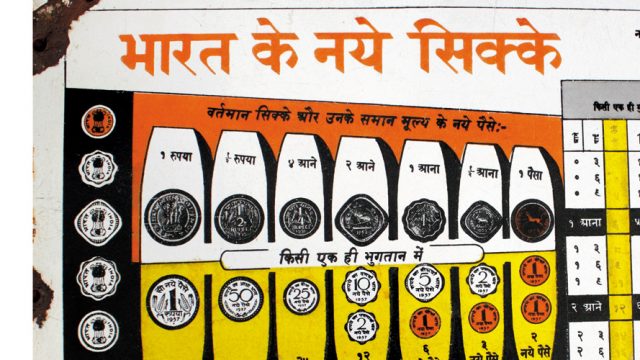In November last year when the Modi government demonetised ₹500 and ₹1,000 currency notes, before the mainstream media—newspapers, magazines and even TV—could fully fathom the move and the scale of its consequences, the news had spread far and wide on the Internet. Smartphones beeped relentlessly with Facebook updates and WhatsApp messages and a whole nation went into full-blown panic mode over its soon-to-be-obsolete cash. The following weeks saw serpentine queues outside banks and ATMs. But this was hardly the first time Indian currency had experienced a makeover. The old Indian currency denominations of annas and pies began to be phased out in the April of 1957 in favour of the naye paise.

The decimalisation of the Indian rupee, according to international standards, was notified and the conversion from old denomination to new explained by the government then with big boards and advertisements for almost a year, says Aditya Vij, the collector who now owns one of these boards from 1957. These enamel boards were installed at various locations—from banks and post offices to railway stations, airports and money changers—to ensure that there was no confusion in daily trade. Interestingly, the board mentions that both the old and the new currency would be valid for three years. Vij was overjoyed to find this historically significant board with a money changer in Rajasthan. It is now a part of his enormous collection of artefacts across 18 categories that include vintage cars, cameras, typewriters and tin boxes.




